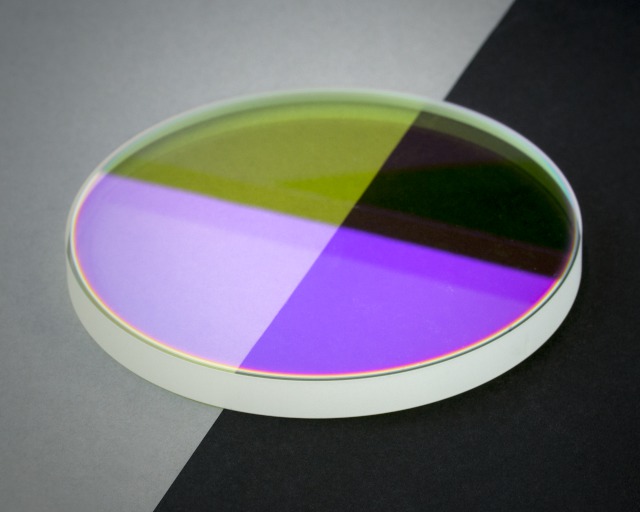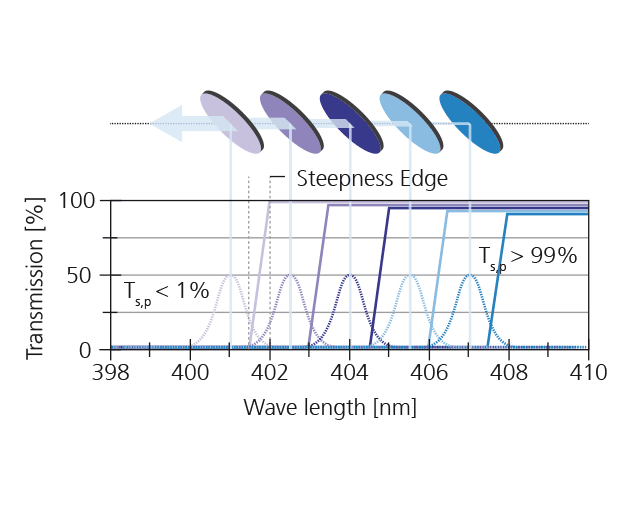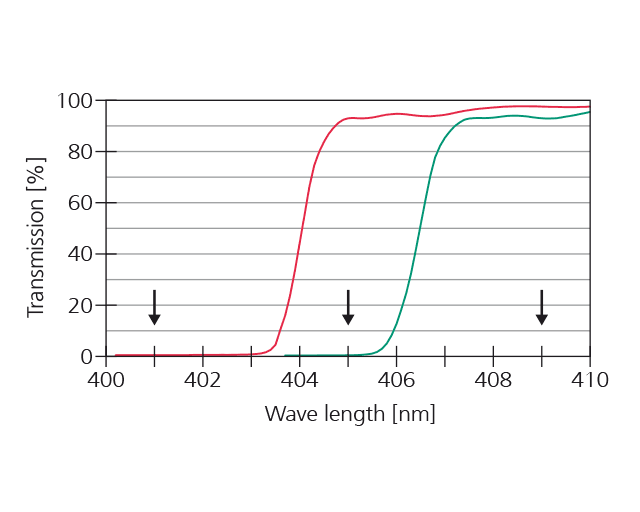
Development of an optical beam splitter with an extremely steep edge

At the Fraunhofer IST outstanding possibilities for the deposition of highly demanding optical coatings were provided with the EOSS® (Enhanced Optical Sputtering System) coating platform. Thus not only can coatings with a very low defect rate be produced, but highly-complex coating designs can also be mapped with extreme precision and uniformity of the coating.




With rotatable cathodes, optimized sputter targets, and use of the magnetron sputtering technology the system enables production of optical filter coatings with excellent coating quality that are required for many industrial applications. One example is an optical beamsplitter with an extremely steep edge, which was developed at the Fraunhofer IST as part of the BMBF project.
Project objective
Development of the extremely steep edge filter, which allows realizing a high throughput laser direct imaging (LDI) system, occurred as part of the project ”Entwicklung eines hochintegrierten digitalen Hochleistungsbelichters für die Belichtung von Lötstopplacken” (Development of a highly-integrated digital high-performance laser direct imaging system), abbreviated as: DAHLIA. The objective was to generate a coherent laser beam in a very narrow spectral range, and thus generate a significantly increased laser output (see middle figure). However, in the case of LDI imaging for printed circuit boards (PCB), for physical-chemical reasons only a limited spectral range can be used to generate wavelengths of 400 nm. Consequently, in this example laser diodes with wavelengths between 395 and 405 nm were used.
The principle of edge filters
Edge filters, which are also referred to as beamsplitters, are produced through dielectric multi-layer coating. In this process a low-index and a high-index material are stacked on top of each other as a thin film, so that ultimately a spectral range of higher reflection, as well as higher transmission, occurs. Since under ideal conditions an absorption is not present, this means high transmission as well as minimal reflection, and vice versa. The edge, i. e. the transition area between high reflection and high transmission, becomes steeper as more layers are used. The steeper the edge, the closer the filters can be placed side-by-side, and the more laser diodes that can be coupled without loss (see figure below).
Manufacturing the edge filters
In this project this resulted in film systems with more than 100 individual coatings in some cases, and an overall film thickness of more than 15 µm. The individual layers must be produced with extraordinary precision, as even least coating fluctuations would mean poorer overall performance. Consequently, for the manufacturing of the filters the EOSS® coating system was used, with which in addition to high precision, low-scatter coatings can also be produced. Because the light passes through multiple coated optics, and thus losses due to scatter would be multiplied the low-scatter coatings are especially important.
The adjacent diagram shows the spectra of several manufactured filters. It is clear that an excellent edge steepness has been reached. Smaller drops in the transmission are caused by remaining layer thickness fluctuations, however these fluctuations are currently being further optimized. However, the previously produced filters already fulfill the desired function requirements in an outstanding manner.
This article is part of the annual report 2017.